by Howard Gardner
For those of us over the age of 70, the name “John F. Kennedy” brings back vivid memories: his youthful energy, meteoric rise to the presidency, apparently storybook marriage, event-filled 1000 days in his office—and of course, his tragic assassination and the ill luck that plagued and has continued to plague the Kennedy family. As his aide Daniel Patrick Moynihan reflected shortly after Kennedy’s death, “We’ll laugh again but we’ll never be young again.”
Of course, for those a generation younger, Ronald Reagan is vivid while Kennedy is but a distant name—just as, for my parents’ generation, Franklin Roosevelt dominated their consciousness, while his cousin Theodore was just for the history books... and the face of Mt Rushmore.
But whether you know the details of Kennedy’s life, or just some headlines from movies or stories, you probably have an opinion of his presidency: how successful it was, whether he achieved what he wanted, whether what he achieved was good for the country, how he related to persons, institutions, and issues—to put it bluntly, whether, as a president, he carried out “good work”, was OK, or not up to the task.
I’ve wondered this myself for many years—and my own views have swung back and forth.
On the ‘"good Kennedy” side of the scale: he was highly intelligent and articulate, made excellent appointments, and after some early blunders, reached wise and courageous decisions, particularly with reference to foreign affairs. Of critical importance, once he realized that the struggle for control over Vietnam was a never-ending morass, he would have found a way to withdraw American forces…. and the latter part of the 1960s would have been entirely different
On the “not good” side of the scale: he was a spoiled East Coast playboy. His father, a person of great wealth and questionable ethical standards, “bought” his son elected offices, including the presidency. JFK himself was an ardent cold warrior; he displayed cowardice with respect to the case of Senator Joseph McCarthy and was as diffident as possible on civil rights. And as a man of the mid-century, who had accused the Republicans of allowing a missile gap with the Soviet Union, he would never have had the courage to withdraw from Indo-China .
But now I have two new tools with which to ponder this question: a biographical tool—an impressive biography of the young Kennedy; and a conceptual tool—the rings of responsibility
A Biographical Tool
I had thought that we had our fill of books about JFK, but now Swedish-born Harvard historian Fredrik Logevall has written a hefty volume on the first part of Kennedy’s life—up through his unsuccessful bid for the vice-presidency in 1956. (Still to come in Volume 2: JFK’s run for the presidency in the late 1950s; his closely won election in 1960; and the 1000 days before his assassination). The book is thoroughly researched, carefully argued, and well written. I doubt that we will need to have another book on young Kennedy. Unlike Robert Caro, author of five volumes on Lyndon Johnson, Logevall has not devoted most of his writing life to a single President—and yet, the Logevall volumes may well become the definitive life of JFK.
As one who has become increasingly critical of JFK over the years, I can affirm that Logevall does not attempt to hide JFK’s weak spots—his reckless womanizing, even with women whose other political or criminal liaisons were being investigated by the FBI; his careless treatment of one-time friends, his startling insensitivity to wife Jackie’s wants and needs, his reluctance to speak out on issues of civil rights, the dispute about how much he himself wrote of the Pulitzer Prize winning “Profiles of Courage,” and most damningly, his unwillingness first to denounce and then to vote to censure the reckless demagogue Senator Joseph McCarthy (who was a friend of the senior Kennedy and for a time the boss of brother Robert Kennedy). At the same time, JFK seems to be admired by the author—I expect that the Kennedy Presidency will get high marks in volume 2.
I’m neither an historian or a biographer. I was engrossed by the book (read it in two sittings) but don’t feel competent to comment on it critically. But as a social scientific researcher—one long interested in what it takes to carry out “good work”—I was struck by an unusual and unexpected aspect of young JFK’s life.
The Rings of Responsibility
In our studies of ‘good work (thegoodproject.org), we denote and analyze individuals’ recognition of the “rings of responsibility”—these are the areas of life experience about which individuals show (or do not show) concern. For the most part, young children are interested in and concerned about themselves and their immediate family—psychologists often speak about the egocentrism of the young. Our research has revealed that circles gradually expand—as they grow, individuals become concerned about friends; then about neighbors and those who live in their community; then as they become adults, about the atmosphere and relations at their workplace and the health of their profession; and gradually, in the most impressive cases, about their relation to the wider world, including individuals and even regions of which they do not have much personal experience.
On this analysis JFK turns out to have been very unusual. From a very early age, he was interested in large scale adventures involving conquering heroes; and while many young people, especially boys, admire super-heroes, JFK was equally interested in live historical figures—most particularly, by Winston Churchill. (It helped that as a youth he had met many political and religious leaders, including the Pope, but so had dozens of other young persons who came from powerful families). Nor did he simply echo his father’s views—while his father clashed repeatedly with Winston Churchill, JFK admired Churchill’s foresightedness and his conduct in the 1930s and thereafter.
An indifferent student throughout his formal education (though he was talented enough and wealthy enough to gain access to elite institutions), young JFK focused on what he found most intriguing: political and historical events and figures—the outermost rings in our scheme. That’s what he thought about, studied in depth, wrote about, identified with—from childhood on.
JFK’s family was incredibly close knit. He was the third of nine children; they all spent a great deal of time together and were tightly bonded with one another. Within the family, the boys took unquestioned precedence; no matter how personally impressive they might have seemed to others, the girls were almost considered decorative. Father Joseph Kennedy was a lifelong womanizer, whose covert and overt infidelities were tolerated by his wife, and the five sons clearly saw this pattern as one to be emulated—sometimes fathers and sons even competed for the affection of the same woman!
Tellingly, when any non-family member attempted to broach the family circle in anyway, these ‘intruders’ were clearly and sometimes roughly rebuffed. Indeed, throughout her relatively short and (we learn) very tumultuous marriage to “Jack”, Jacqueline Kennedy never felt that she belonged in the family. The inner ring was very tight and not easily broached. Tragically, Rosemary, the one disabled child, was lobotomized and essentially expelled from the family.
Once his older brother Joseph had been killed in an air crash in World War II (when JFK was in his middle 20s), JFK clearly became the family member destined for politics. And indeed, right after the War, with ample help from his father’s financial base and from all members of the family, he was elected to the House of Representatives. He began a rapid rise to the Presidency, indeed at the time of his ascendancy to that office, he was the youngest person ever to win a presidential election.
During his relatively brief terms in the House and Senate, JFK worked hard and was deemed competent; but biographer Logevall suggests that (unlike most Massachusetts politicians who gained national stature) JFK was really not interested in local or regional issues—and, as noted, the young politician steered away from issues which were controversial and might lose him votes in forthcoming elections. From his first days in the House of Representatives he had his eye on the Presidency and – with whatever help he could garner—would do what was necessary to achieve that goal.
Importantly, in addition to the assistance of cash and kin, Kennedy also had incredible human help along the way—friends, hired staff assistants, and above all Theodore Sorensen, a gifted young lawyer who essentially devoted his life to JFK from the time that they first met in 1953 until Kennedy’s assassination and indeed, one could add, until Sorensen’s own death almost half a century ahead.
It must be stressed that Kennedy gained the support of such individuals not only for his intellectual and political acumen because of a property that cannot be purchased or faked—personal charisma. Logevall presents numerous vivid examples of how young JFK was able to attract and retain the affection of others—men and women, young and old, from his own Boston-Irish class and from demographies remote, in person or via the media, notably television . Indeed, few of us who were enamored of Kennedy in the late 1950s and early 1960s knew him personally (I once got a letter from him, no doubt signed by an office machine, and actually spied him at a Harvard football game a month before he was assassinated); but we felt a strong attraction to him, his photogenic family, and his “New Frontier”.
Returning to the rings of responsibility, JFK seems to have been quite unusual. I find little evidence in the biography for a concern with the feelings and reactions of peers that transcends the transactional: JFK was charming but when individuals—male or female—were no longer of use to him, he had few qualms about removing himself from their circle. (I should acknowledge his heroic efforts to save members of his naval crew when their boat PT109 was sunk). By the same token, while he paid lip service to the issues that arose in Boston or in the New England region, these clearly did not compel his attention. And when there were national issues on which he might have spoken up—specifically civil rights and McCarthy—he found it convenient to mute his tongue and pocket his pen.
Perhaps we can say that Kennedy was destined to occupy the widest circles of responsibility—dealing with issues of war and peace across the international landscape—but that does not indicate whether he would handle them effectively. For one person’s considered view, we must await the second volume of Logevall’s biography.
The case of JFK raises intriguing further issues. How usual or unusual is it for individuals who seek and attain the highest rings of power to move easily to that region or even to skip the intermediate rings altogether? Comparisons could be instructive: with others who attain national and international leadership roles at an early age—Churchill, deGaulle come to mind; as well as with others, like Richard Nixon, Ronald Reagan, or Bill Clinton—who were able to transcend a childhood with few of the supports that the Kennedy children took for granted.
© Howard Gardner 2020






